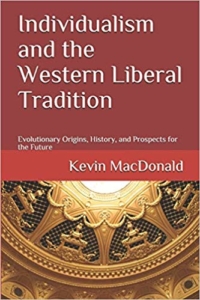Scott Ritter on Trump’s pivot on Ukraine: The Death of a Nation
The Death of a Nation
President Trump announced that he supports Ukraine’s goals of returning to their 1991 borders with Russia. He believes he is helping Ukraine. All he has done is insure the destruction of a nation.
Trump addresses the UN on September 23, 2025
With one stunning social media post, President Donald Trump ended all pretense at being a broker of peace between Russia and Ukraine. During his campaign in the 2024 Presidential election, Trump repeatedly emphasized that his goal was to bring the conflict to an end “within 24 hours” of being sworn in. While this timeframe proved elusive, Trump remained committed to achieving a lasting peace, even if he was unable to articulate a strategy on how exactly this would be accomplished.
Trump has, from the very onset of his presidency, been ill advised by a coterie of foreign and national security officials who, with very few exceptions, are dyed in the wool Russophobes. From his Secretary of State, Marco Rubio, to his National Security Advisor (initially Mike Waltz and, after his firing in May, Marco Rubio, wearing to hats ala Henry Kissinger), to his Secretary of Defense, Pete Hegseth, to his CIA Director, John Ratcliffe, and on to his Secretary of the Treasury, Scott Bessant, Trump has surrounded himself with people who have spent their adult lives loathing Russia and its leadership.
To the extent that Trump has access to advisors who might advocate good relations with Russia, he either dismisses their advice (as is the case with Tulsi Gabbard, his Director of National Intelligence), or nullifies their advice by having a Russophobic counter (as is the case with his Russia Special Envoy, Steve Witkoff, whose insights are offset by the anti-Russian positions held by Keith Kellogg.)
Trump’s base instincts, which incline towards not only ending the conflict in Ukraine but also normalizing relations with Russia, are subjected to considerable pushback from his inner circle, with little or no pushback coming from any other source. Making matters worse is the fact that America’s European allies are almost unanimously supportive of policies designed to keep Ukraine in a fight designed to strategically defeat Russia. As a result, what passes for Russia policy in the Trump administration suffers from severe vaccination as Trump is subjected to pressure from all sides to turn his back on Russia and its leader, President Vladimir Putin.
In August, it looked like the President’s instincts had won out, with Trump meeting with Putin in Alaska. This meeting resulted in Trump largely embracing Russia’s positions of conflict termination which would require Ukraine to agree to territorial concessions as well as limitations on its military size and political sovereignty.
Barely a month later, President Trump appears to have done a complete 180 degree turn regarding the issue of territorial concessions. “After getting to know and fully understand the Ukraine/Russia Military and Economic situation,” Trump posted on his Truth Social account, “and, after seeing the Economic trouble it is causing Russia, I think Ukraine, with the support of the European Union, is in a position to fight and WIN all of Ukraine back in its original form. With time, patience, and the financial support of Europe and, in particular, NATO, the original Borders from where this War started, is very much an option.”
Trump then changed direction regarding his prognosis of how the conflict was progressing. Back in May, Trump acknowledged that Russian President Putin was not looking for an off-ramp from the conflict in Ukraine because Russia believed it was winning the war. This perception was held through the Alaska Summit. But Ukrainian claims of a successful counterattack north of Pokrovsk, and continued Ukrainian drone strikes against Russian energy targets, helped sway Trump into changing his analysis. “Russia,” Trump noted, “has been fighting aimlessly for three and a half years a War that should have taken a Real Military Power less than a week to win. This is not distinguishing Russia. In fact, it is very much making them look like ‘a paper tiger.’”
Trump then went on to further characterize his perception of a weakened Russia now vulnerable to an emboldened Ukraine. “When the people living in Moscow, and all of the Great Cities, Towns, and Districts all throughout Russia, find out what is really going on with this War,” Trump wrote, “the fact that it’s almost impossible for them to get Gasoline through the long lines that are being formed, and all of the other things that are taking place in their War Economy, where most of their money is being spent on fighting Ukraine, which has Great Spirit, and only getting better, Ukraine would be able to take back their Country in its original form and, who knows, maybe even go further than that!”
Ignore for the moment that Trump literally greenlighted actions which, if implemented, would most certainly result in a nuclear war. The fact is someone has convinced Trump that Russia is vulnerable militarily and economically. “Putin and Russia are in BIG Economic trouble,” Trump declared, “and this is the time for Ukraine to act.”
Trump closed by “wishing both countries well” and stating that the US “will continue to supply weapons to NATO for NATO to do what they want with them.”
This post by Trump puts to rest any notion that he remains committed to solving the Russian-Ukrainian conflict. No one should have been surprised by this move—Trump has been stating that he would walk away from the conflict if he were unable to get both parties interested in concluding a peace deal. Neither were, and this is the result.
On the surface Trump’s posting comes off as anti-Russian and pro-Ukrainian. But the public posturing hides the simple truth that Trump is largely abandoning Ukraine to its inevitable destiny with fate. While Trump has embraced Zelensky’s narrative regarding Ukraine’s battlefield prowess and Russia’s economic weakness, he has taken no meaningful action to further either to Ukraine’s advantage.
Trump will not be altering his administration’s policies regarding arms sales to Ukraine, continuing instead to follow a formula which has Europe purchasing weapons from the United States and then transferring them to Ukraine. There is no change in the prioritization of manufacture, which is skewed in favor of replenishing depleted US stockpiles. The result is that the weapons Ukraine claims it so desperately needs will not begin flowing into Ukraine in any meaningful quantities until 2027.
Trump likewise has linked any decisive US move regarding the sanctioning of Russia to similar moves on the part of Europe, including the cessation of all purchases of Russian oil and gas and the imposition of sanctions on India and China as punishment for their continued purchasing of Russian energy. The problem is Europe is unable to meet these prerequisites, meaning that the US policy when it comes to the sanctioning of Russia will remain largely unchanged.
The reality is that Trump’s highly charged rhetoric aside, there is no fundamental change in the US approach toward Russia and the Ukraine conflict. And just because Trump claims Ukrainian military superiority over Russia, and Russian economic weakness, does not make either so.
Russia continues to maintain a strategic advantage over Ukraine across every metric used to measure success in conflict—militarily, economically, and politically.
Worse, Trump’s words make achieving a negotiated settlement all but impossible. As a result, Europe will continue to provide financial and military support to Ukraine, prolonging a conflict which has been lost for some time now.
But this prolongation will be to the detriment of Ukraine. Russia has mastered the algorithm of attritional warfare, and Ukraine will continue to lose manpower and equipment at a rate that far exceeds its ability to replace either. Russia will likewise continue to destroy critical industrial and energy infrastructure, making Ukraine even more dependent upon European largesse for its continued survival. The combination of military and economic stresses will in turn place strain on the continued political viability of the Zelensky government. Eventually the combined stress of these three collapsing pillars will lead to the disintegration of Ukraine as a governable territory.
In short, Ukraine will no longer exist as a sovereign country.
The price of this defeat will be unbearable for Ukraine. One can easily anticipate death tolls among Ukrainian soldiers that double the 1.7 million dead and missing Ukrainian soldiers who have fallen to date. Ukraine will lose additional territories as well, including Odessa, Mikolayev, Kharkov, and perhaps Dnepropetrovsk and Sumy as well. One can anticipate, too, the further loss of territories as Poland, Hungary, and Romania carve up what remains, leaving only a small rump state centered on Kiev that would be known as Ukraine. The concept of independence and sovereignty has likewise been mooted—whatever remains of Ukraine will forever be under the control of Russia. Dreams of European Union membership will be replaced by Ukraine’s status as the junior partner of an expanded Union State.
This is what Donald Trump has accomplished through his social media posting and subsequent media appearances. He thinks he is posturing as a strong man. But the reality is far different: Donald Trump, by lifting the hopes of Ukraine while simultaneously dashing them, has exposed himself as being intellectually limited and morally diminished. Only too late will Ukraine and its European allies realize they have been duped. By then, the duplicity of Donald Trump will be evident to all—except of course the millions of Ukrainians who will perish as a result.





Voted for the guy 3 times, but he has lost the plot lately. His take on Ukraine is certifiable.
What should be done, instead?
“In August, it looked like the President’s instincts had won out, with Trump meeting with Putin in Alaska”
“Barely a month later, President Trump appears to have done a complete 180 degree turn regarding the issue of territorial concessions.”
“Trump then changed direction regarding his prognosis of how the conflict was progressing.”
—-
“Trump says shit all the time, and then says the opposite shit a few minutes later.” (Sasha Latypova on substack). No more needs to be said about Trump and his never-ending conniving. Or is it some form of brain damage.
Was nutcase Rahn a.k.a. Hamburger a
gay Jew? Fanboy “Karl Radl” vehemently
rejects this possibility. He is said to have
been influenced by the heretical Cathars,
whom Rome had massacred in Pyrenees.
https://karlradl14.substack.com/p/was-otto-rahn-a-homosexual
An obscure half-Mick had also strayed there.
https://en.wikipedia.org/wiki/Russell_Caves
This is where Browndon Moorbeanez’s valuable
translation work could come in handy, especially
after his latest “Hitler’s Vampire Economy” video
flopped miserably and he even disappointed his
intimate supporter Docta Quackory Schlongson.
They seem to have been living out their little
intimate secret for over 6 years, when Brown-
don still disguised himself as a “Falangist.” [sic]
https://www.youtube.com/watch?v=rhW0p7sb1Fw
As a thumbnail for his silly Hitler-bashing video,
he uses a meme that is supposed to depict Hitler
wearing epaulettes, even though he never wore
them on his uniform (it doesn’t make any sense).
https://www.youtube.com/watch?v=W_PpVbm94X0
But Judentube’s auto-translate function can also be
used, especially considering the fact that Browndon
charges horrendous vampire prices due to his long-
term unemployment (he was a genital hairdresser).
https://www.youtube.com/watch?v=uiMdGNvfIag
https://www.youtube.com/watch?v=T4a33h1dgrg
Not to be confused with this “installation.”
https://archive.is/wip/yynOR
https://www.youtube.com/watch?v=ufO0RVEjgsI
https://www.youtube.com/watch?v=lsbrgDzbyT8
Self-proclaimed “heathen” Roland (is the
Indian “Govinda” in his email address his
last name?) spouts his half-baked wisdom
to his followers, including about Schiller and
Rahn. Perhaps a pseudo-Hindu Hitler worship-
per like Schlongson’s great idol Savitri Devi?
https://forebears.io/surnames/govinda
https://www.perplexity.ai/search/what-do-you-make-of-that-https-bQJk3_LNTHCDBQLEkwGY.A
https://dn720006.ca.archive.org/0/items/ErmordungFriedrichSchillers/Fikentscher_Schiller_OCR.pdf
https://www.perplexity.ai/search/content-in-detail-https-archiv-szuCLuLTRaeU85cSRWvCNA
https://dn790006.ca.archive.org/0/items/FikentscherMorell/Fikentscher_Morell_Endfassung.pdf
I only know Lutz Rahn. And that’s
more than enough for this name!
https://www.discogs.com/artist/333454-Lutz-Rahn
https://www.youtube.com/playlist?list=OLAK5uy_mG35ZERtVaOeMiIWf6hsfl_PzzQRSa9jo
https://www.theoccidentalobserver.net/2025/09/24/implicit-whiteness-and-anti-semitic-conspiracy-theories-at-the-charlie-kirk-memorial/#comment-390745
Weathercock Trump has more than a personality problem: the casino loser of Atlantic City versus the chess grandmaster in Moscow and the Go player in Beijing. Russia has a reasonable case for reclaiming Donbas & Crimea, but not annexing the Baltic states and Poland again (see Sean McMeekin, Joachim Hoffmann and J. Otto Pohl). The important thing is to stop China helping Russia.